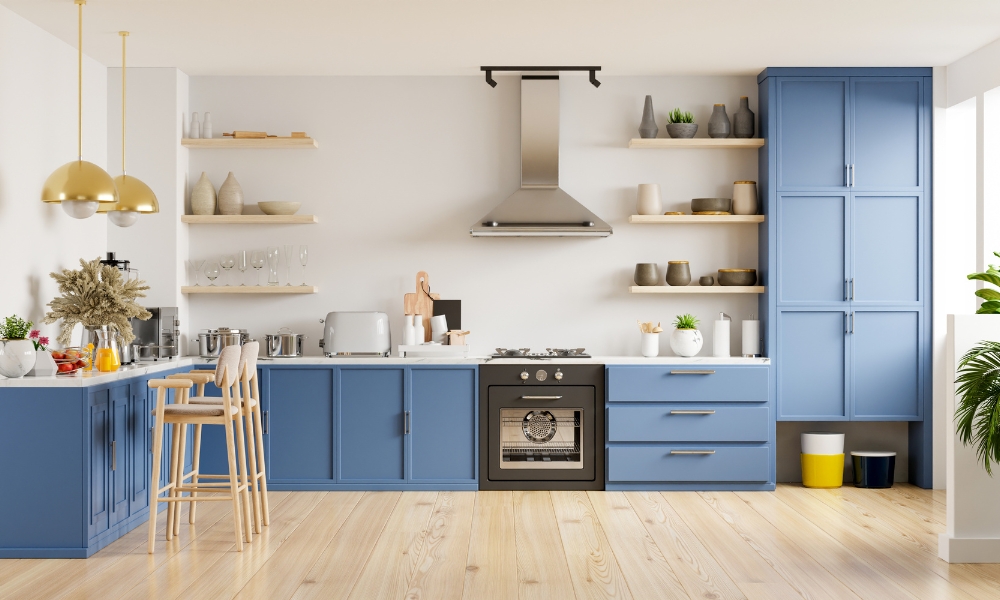Furniture board in kitchen cabinets is a popular material choice due to its affordability and versatility. Composed of wood particles bonded together with adhesive under heat and pressure, this engineered wood product offers a cost-effective alternative to solid wood. Furniture board, often referred to as particle board or chipboard, is widely used in the construction of kitchen cabinets, providing a smooth surface ideal for laminates and veneers. Its lightweight nature and ease of handling make it a favorite among manufacturers and DIY enthusiasts alike, ensuring that quality cabinets can be created without breaking the bank.
What Is a Furniture Board in Kitchen Cabinets?
Furniture board, commonly known as It or chipboard, is an engineered wood product made from wood particles, such as sawdust and wood chips, bonded together with a resin. This material is created under high heat and pressure, resulting in a dense and uniform board that is cost-effective and versatile. Furniture board is frequently used in the construction of kitchen cabinets because it provides a smooth surface that is ideal for applying laminates and veneers, giving cabinets a polished and high-end appearance without the expense of solid wood. Its affordability and availability make it a popular choice among both manufacturers and homeowners looking to renovate their kitchens on a budget.
What Is the Lifespan of Furniture Board Cabinets?
The lifespan of furniture board cabinets largely depends on factors such as usage, humidity levels, and maintenance. Generally, these cabinets can last between 10 to 15 years with proper care. While furniture board is not as durable as solid wood or plywood, advancements in manufacturing have significantly improved its strength and moisture resistance. To extend the life of furniture board cabinets, it is essential to avoid excessive moisture exposure and to handle them with care. Regular cleaning and timely repairs of any damage can also help maintain their appearance and functionality over the years. Thus, while furniture board cabinets may not last as long as some other materials, they offer a practical and economical solution for many homeowners.
Types Of Furniture Board Used In Kitchen Cabinets
1. Particle Board
2. Mdf (Medium-Density Fiberboard)
3. Hdf (High-Density Fiberboard)
4. Plywood
Particle Board in Kitchen Cabinets
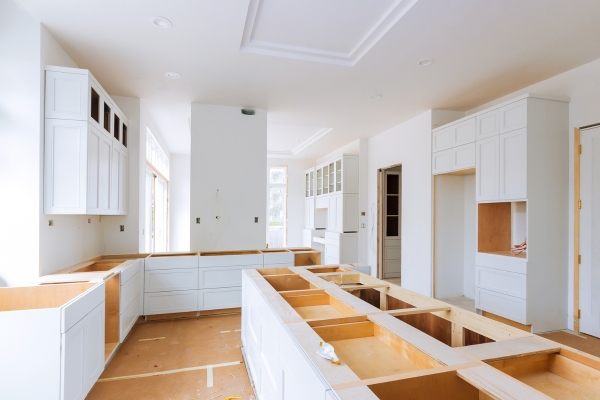
Particle board is a popular choice for kitchen cabinets due to its affordability and ease of use. Made from wood chips, sawdust, and other wood particles bonded together with resin, the particle board provides a smooth surface suitable for laminates and veneers. While it is less durable than other materials, its lightweight nature makes it easy to work with during cabinet installation. However, it is more susceptible to moisture damage and may not last as long in high-humidity environments. Despite these drawbacks, It remains a cost-effective option for budget-conscious homeowners seeking functional cabinets.
MDF in Kitchen Cabinets
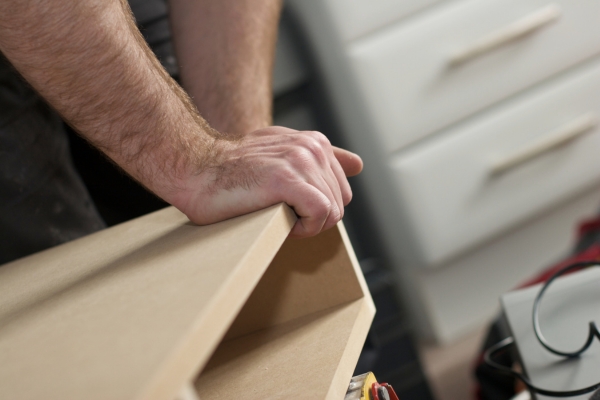
Medium-Density Fiberboard (MDF) is a step up from particle board in terms of strength and finish quality. Composed of fine wood fibers bonded with resin under high pressure, MDF offers a smoother and denser surface ideal for painting and detailed designs. MDF’s uniformity prevents issues like warping and splitting, making it a reliable choice for Remove Old kitchen cabinets. Its smooth surface allows for a high-quality finish, whether painted or laminated. However, MDF is heavier than It and can be more challenging to handle, but its durability and aesthetic appeal make it a preferred material for high-end kitchen cabinetry.
HDF in Kitchen Cabinets

High-Density Fiberboard (HDF) is similar to MDF but offers even greater density and strength. HDF is made from highly compressed wood fibers, resulting in a board that is extremely durable and resistant to wear and tear. This makes it an excellent choice for kitchen cabinets that need to endure heavy use and frequent handling. HDF’s robust nature also means it is less prone to warping and moisture damage compared to particle board and even MDF. Its ability to be finely milled allows for intricate designs and detailed finishes, making HDF a premium option for kitchen cabinetry.
Plywood in Kitchen Cabinets
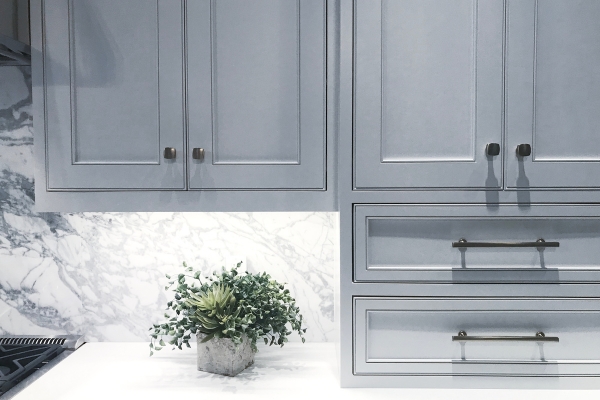
Plywood is a highly regarded material for kitchen cabinets due to its exceptional strength and stability. Made from multiple layers of wood veneer glued together with alternating grain directions, plywood offers superior resistance to warping and moisture compared to particle board and MDF. This makes it an ideal choice for kitchen environments, which are often exposed to humidity and spills. Plywood can be finished with various veneers or laminates, providing a high-quality appearance and long-lasting durability. While it tends to be more expensive, the investment in a plywood kitchen can be worthwhile for homeowners seeking robust and long-lasting cabinetry.
Comparing Furniture Board Types
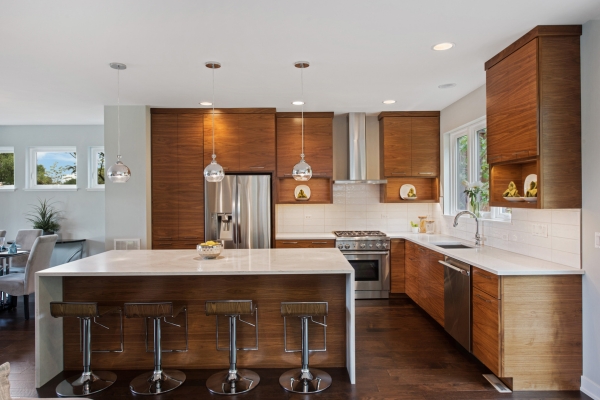
1. Durability
When it comes to durability, plywood stands out as the most robust option. Its cross-grain structure makes it highly resistant to warping and moisture, ensuring long-lasting performance in kitchen environments. HDF (High-Density Fiberboard) follows closely, offering excellent strength and resistance to wear and tear. MDF (Medium-Density Fiberboard) is also durable, though it is more susceptible to moisture damage than HDF and plywood. Particle board is the least durable of the four, prone to swelling and deterioration when exposed to moisture.
2. Cost
In terms of cost, particle board is the most economical choice, making it attractive for budget-conscious projects. MDF is moderately priced, providing a balance between affordability and quality. HDF tends to be more expensive than MDF but less costly than plywood, offering a good compromise for those seeking durability without the high cost. Plywood is typically the most expensive option due to its superior strength and quality.
3. Ease of Installation
For ease of installation, particle board is the simplest to work with due to its lightweight nature, making it easy to cut and handle. MDF and HDF are denser and heavier, making them more challenging to maneuver but still relatively straightforward to install with the right tools. Plywood can be cumbersome to handle because of its weight and thickness, but its strength allows for secure fastening, reducing the risk of splits and damage during installation.
4. Aesthetic Considerations
Aesthetically, MDF and HDF are preferred for their smooth, uniform surfaces, which are ideal for painting and detailed finishes. They provide a high-quality look that can mimic the appearance of more expensive materials. Plywood also offers a visually appealing finish, especially when using high-grade veneers that showcase attractive wood grains. Particle board, while often covered with laminates or veneers, does not offer the same level of aesthetic refinement and can look less premium compared to the other options.
In summary, the choice of furniture board for the kitchen depends on the specific needs and priorities of the project. Plywood excels in durability and quality, HDF offers a strong and cost-effective alternative, MDF provides a balance of affordability and finish quality, and It is a budget-friendly option that is easy to work with but less durable.
Why Choose a Furniture Board for Kitchen Cabinets?
Choosing a furniture board for kitchen cabinets offers several compelling advantages that cater to various needs and preferences.
One of the primary reasons is affordability; furniture boards like particle board, MDF, and HDF provide cost-effective alternatives to solid wood, making high-quality cabinets accessible to budget-conscious homeowners. Additionally, these materials are highly versatile and can be finished with laminates or veneers, allowing for a wide range of aesthetic options that can mimic more expensive materials.
Durability is another factor, especially with options like HDF and plywood. Which offer robust performance and resistance to wear and tear. While particle board and MDF may not be as durable as plywood. Advancements in manufacturing have enhanced their strength and moisture resistance, ensuring they hold up well in everyday kitchen use. Ease of installation is also a significant advantage, particularly with lighter options like particle board. And MDF, which are easier to cut and handle during the installation process.
Furthermore, furniture boards are environmentally friendly choices as they make use of wood by-products and recycled materials, reducing waste and promoting sustainability. This aspect appeals to homeowners who are conscious of their environmental footprint.
Conclusion
Choosing a furniture board for cabinets is a practical and economical decision that does not compromise on quality or style. With options like particle board, MDF, HDF, and plywood, homeowners can find the perfect balance between cost. Durability, ease of installation, and aesthetic appeal. Whether prioritizing budget constraints or seeking a high-end look, furniture boards offer versatile solutions that meet. A wide range of needs, making them an excellent choice for modern kitchen cabinetry.
